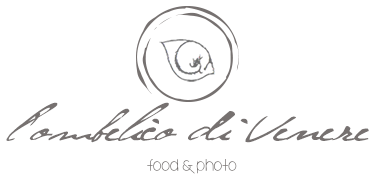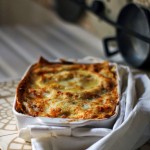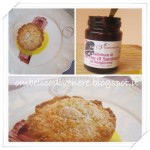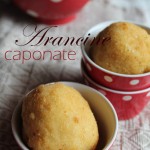Prosecco Demi-sec And of course, you can use traditional Brut Champagne for a myriad of bubbly cocktails and punches, like these 3-ingredient Champagne cocktails. Ultra Brut; Brut; Extra Dry/ Extra Sec – slightly sweet as it contains 12-17 grams/liter of residual sugar; Demi-Sec – sweet with 32-50 grams/liter content of residual sugar; Doux – sweetest with 50+ grams/liter content of residual sugar ; In summary, both the terms “cuvée” and “brut” are used to refer to sparkling wines. Is it a business meeting? The levels of sweetness starts from dry to medium and sweet. Extra Brut: 0–6 Brut: 0–12 Extra Dry, Extra Sec, Extra seco: 12–17 Dry, Sec, Seco: 17–32 Demi-sec, Semi-seco: 32–50 Doux, Sweet, Dulce: 50+ Article 58 points out "the sugar content may not differ by more than 3 grams per litre from what appears on the product label", so there is some leeway. It has 50+ g/l RS is equivalent to over 2 teaspoons sugar per 5 oz/150 ml serving. An extra brut Champagne will be very dry, while a demi-sec is the sweeter option, with brut (dry), extra dry and sec lying somewhere in the middle with an off-dry to semi-sweet offering. So, if you want to keep it on the dry side, opt for Extra Brut or Brut Nature if it’s available. Many people replaced their favorite beverages with champagne, as a light and pleasant alternative. If you prefer your Prosecco in a drier style, you want to be looking for ‘Brut’, which is allowed up to 12g of residual sugar per litre. All of life's best moments call for Champagne: holidays, birthdays, graduations, weddings, and more. It’s best to see the scale as more of a broad guide. The difference in the various classifications of champagne is their sugar content. Dry and zesty wines are made with non-aromatic grapes like Chardonnay and Pinot Noir. "Extra trocken" oder "extra dry": Unter dieser Bezeichnung finden Sie Sekt, der nicht ganz so süß ist: 12 bis 20 g Zucker pro Liter sind nach dem EU-Weingesetz hier erlaubt. Drier than that is Extra Brut or Nil Dosage etc, whilst less dry is Sec ond so on. It has control over the sweetness, balancing the latter with the dryness. It is most commonly used in cooking as it creates nutty, rich, and caramelized taste – especially in sauces. Ultra Brut contains no added sugar. Anyways, the main difference between Brut and Extra Dry champagne is the level of sweetness in the beverage. Viene quindi definito vino brut un prodotto enologico che contiene meno di 12 gr/L di zucchero. After all, it turns out that the Extra Dry champagne’s least possible grams of residual sugar (12g) is the maximum you can get from the Brut champagne.eval(ez_write_tag([[250,250],'towineandcheese_com-box-4','ezslot_6',108,'0','0'])); Dry – This champagne has 17-32 g/l RS is equivalent to ¾-1 teaspoon sugar per 5 oz/150 ml serving. On the other hand, if you want your champagne to be a little drier, rather then balanced up with the sweetness, then you would really love the Brut. Brut, Extra dry, Dry cosa vorranno mai dire? But for so many of us, picking out a bottle of Champagne can come down to which one has the prettiest label, instead of the words on the label. What's actually in that bottle of bubbly? Brut? Add comma separated list of ingredients to include in recipe. Anyways, the main difference between Brut and Extra Dry champagne is the level of sweetness in the beverage. Well there are actually a number of classifications within the Champagne category to complicate things. Your choice may also depend on the occasion or event you are getting the champagne for. Brut: trocken, Restsüsse unter 15g/l. Here are some types of champagnes that will satisfy your lack of sweetness. Extra Dry: middle of the road dry, not as dry as Brut (great as an aperitif) Demi-sec: pretty sweet (pair with fruit and dessert) Champagne and sparkling wines are also categorized as "vintage" or "non-vintage" (NV on the label) meaning they either come from a single year or are a blend of several different years. Champagne is classified by sweetness. Brut, Extra dry, Dry cosa vorranno mai dire? Brut, Trocken, Halbtrocken: Welcher Sekt schmeckt wie? 0 0. Extra dry Champagne can have up to 2 percent sugar content. "Extra trocken" oder "extra dry": Unter dieser Bezeichnung finden Sie Sekt, der nicht ganz so süß ist: 12 bis 20 g Zucker pro Liter sind nach dem EU-Weingesetz hier erlaubt. This is the driest type of champagne and is recommended for people who admire dry beverages. For the most part, the gradient goes from brut (the most popular) to extra dry and Dry (which is, paradoxically, the sweetest). The term extra-dry is used to describe a slightly sweet characteristic and is used in the context of champagnes, sparkling wine and their sugar content. Als "trocken" oder "dry" gelten Schaumweine mit einem Restzuckergehalt von 17 bis 35 g pro Liter - das kann mehr als das Fünffache von einem mit "extra brut" bezeichneten Sekt sein. It contains less than 1.5% sugar, which is about 15 grams of sugar per liter. Dalle percentuali zuccherine avremo dunque un vino più secco o più morbido, modificandone anche sensibilmente le occasioni di utilizzo. Doux? Now let’s get sweeter. Sukkerindholdet er på under 6 g/l. Brut vs Champagne. Brut Champagne has 0-12 g/l Residual Sugar, which does not affect the taste that much. Extra Dry also tastes less sour than Brut, and the sweetness definitely plays its role in that part.eval(ez_write_tag([[300,250],'towineandcheese_com-medrectangle-3','ezslot_5',106,'0','0'])); As mentioned, a lot of people would be surprised to hear that Extra Dry champagne is actually sweeter than the Brut one. Cuvee just means bottling or blend (most champaigne is a blend of three grapes). According to European Union terms for sparkling wine, you can find the following types of sweetness: Brut Nature (no added sugar) - 0 to 3 grams of sugar per litre Extra Brut - less than 6 grams of sugar per litre Brut - less than 12 grams of sugar per litre Sie richten sich in erster Linie danach, wie viel Restzucker sie pro Liter enthalten und wie süß sie demnach sind. The difference between these two champagnes is the level of sweetness. It would be easy to mistake an extra dry for being drier than brut… This is the most common champagne in the world. An extra brut Champagne will be very dry, while a demi-sec is the sweeter option, with brut (dry), extra dry and sec lying somewhere in the middle with an off-dry to semi-sweet offering. Mona. Un Prosecco spumante peut être brut, extra dry ou dry. The most common level of sweetness for Champagne is also brut. Demi-Sec – Now we got to the really sweet ones. Kingsley. Champagnes are categorized as Extra Brut, Brut, Extra dry, Sec and Demi-secdepending on their sugar levels. Extra Dry – This one has 12-17 g/l RS, which is equivalent to ½–¾ teaspoon sugar per 5 oz/150 ml serving. Moreover, this wine... Marsala wine is one of the most famous fortified wines coming from Sicily. Extra Dry? Doux can have a sugar content of up to 10 percent. Spumante, which generally is one of the sweeter wine categories, extra dry which is somewhat in the middle of the sweetness scale and then Brut on … Quienes aman el champán, seguramente saben cuál elegir y … (The three sweetest — sec or dry, demi-sec, and doux — can contain from 17 to more than 50 grams.) Champagne Extra Dry is the term used to denote wines that sit roughly in the middle of the champagne sweetness scale. Add comma separated list of ingredients to exclude from recipe. Brut Vs Extra Dry. While Extra-Dry Champagne is sweeter than Brut Champagne, it is not as sweet as Dry, Demi-Sec, or Doux — the latter of the two are often served as dessert wines. There are six categories of wine; amongst the six categories of wine, extra-dry refers to the category that contains 1% to 2% residual sugar, making them just slightly sweeter than Bruts. It’s hard to pick between those two types, as most of the things depend on the person who drinks the beverage and, of course, his taste. After tasting Brut, some even choose it over the wine they were used to drink. Extra Dry, a bit sweeter than Brut is between 12 and 17 grams of sugar/liter. Generally if it is labeled brut, it will be dry. What is the difference between Brut and Extra Dry? So here's the confusing part: Extra-Dry Champagne (sometimes referred to as Extra Sec) is less dry than Brut Champagne by one classification. That’s it! Generally, Champagnes are made from two types of grapes: Chardonnay and Pinot noir. 0 0. They both taste sour, while some may say that they are a little bitter. Extra Dry is … Because of its low sugar content, Brut Champagne is going to be quite dry, with just a slight hint of sweetness. It’s not as dry as the Brut Nature, Extra Brut or Brut champagnes are. Let your mood become even greater with a glass of fine champagne. Meistens sehr frisch, jedoch weich und zugänglich. Even though Extra Dry Champagne is named as such, it is still moderately sweeter than Brut. Doux? Allrecipes is part of the Meredith Food Group. Als we kijken naar het suikergehalte, zijn er drie versies van prosecco te onderscheiden: Dry, Extra Dry en Brut - dit heeft alles te maken met de hoeveelheid overgebleven suiker in de prosecco. The words they use to describe sparkling wine sweetness make no sense. Brut Champagne vs. Despite its name, Extra-Dry Champagne is actually sweeter than Brut Champagne, as it contains more added sugar, between 12 and 17 grams per liter. Demi-Sec has 32-50 g/l RS is equivalent to 1–2 teaspoons sugar per 5 oz/150 ml serving. Who loves to try new things and this is my blog, where I share my Experiences. this link is to an external site that may or may not meet accessibility guidelines. Extra brut jsou sekty o obsahu 0–6 g/l a pouhé brut pak vymezuje sekty se zbytkovým cukrem do 12 g/l. Keep reading to learn all about the most popular Champagne there is: Brut Champagne. Why’s that? Da notare che, generalmente, per gli spumanti metodo classico (es. Difference Between Brut vs Extra Dry Wines The main factor that makes these two types of wine differ is the level of residual sugars they hold. Extra Dry Champagne . Other terms for Ultra Brut are Brut Zero, Extra Brut, and Brut Nature . Brut Nature – It just has 0-3 g/l Residual Sugar (RS), which is equivalent to less than 1/6 teaspoon sugar per 5 oz/150 ml serving. Now it goes even sweeter up to the end. extra dry Der englische Begriff extra dry bedeutet im Deutschen extra trocken.Der französische Begriff für extra dry oder extra trocken, mit dem die Schaumweine ausgezeichnet werden, ist "très sec".Damit werden Schaumweine ausgezeichnet, die einen Restzuckergehalt zwischen 12 und 20 g/l haben.. extra dry Extra Dry ist eine Bezeichnung, die zumeist für Schaumweine verwendet wird. The amount of sugar in it is so imperceptible that you will not even notice it. 1 decade ago. Extra brut, Brut, Extra dry and Dry are the classifications to recognize the quantity of sugar in Sparkling wines, Champagne and Prosecco, thus the grams of sugar per litre. Spumante sparkling wine, since it is a category of wine, can be produced in any area and with any grape variety. Like all Champagnes, Brut Champagne is made from the grapes grown in northeastern France, otherwise known as the Champagne province — simple enough, right? Not all the Sparkling wines (in Italian, Spumante) are the same, one of the most important characteristic, always specified in the label, is the quantity of sugar in the wine. Brut, Extra-Dry, Doux — what do these terms mean? Despite the fact that most of the people think the opposite because of the “Extra Dry” name of this champagne, still, it is indeed sweeter than the Brut. If you don’t want your champagne to be dry and neither too sweet, then Extra Dry will become a brilliant choice for you. In fact, it is the driest type of champagne that you can find. It makes sense, as this champagne itself tastes pretty dry and just 1.5% consists of sugar. It also is sourer, so you can taste it out to feel the difference. Le brut est la version la plus moderne et certainement la plus internationale. And learn how it's different from other types of Champagne so you can pick the right bottle for your tastes and food pairings. Brut Champagne has 1.5% sugar content, equivalent to less than ½ teaspoon per 5 oz/150 ml serving, while Extra Dry Champagne has 2% sugar content, equivalent to ½–¾ teaspoon per 5 oz/150 ml serving. Now, it’s not a big surprise to know that France leads the champagne market with 102,2 million liters of consumption by total volume in 2021. Extra Dry (Très Sec, Extra Secco, Extra Seco, Extra Trocken): 12 bis 20 Gramm pro Liter – überschneidet sich mit dem Brut und kann daher auch herber als dieser sein. People who like dry wine are highly suggested to try the Brut champagne as well. Brut? Brut – The original Brut has 0-12 g/l RS, which is equivalent to less than ½ teaspoon sugar per 5 oz/150 ml serving. Brut, which means "dry, raw, or unrefined," in French, is the driest (meaning the least sweet) classification of Champagne. Get the one, your mood asks you to get and always remember that champagne is always for drawing a smile on your face and good vibes. Extra Dry? Extra Brut – This brut-type champagne has 0-6 g/l RS, which is equivalent to less than ¼ teaspoon sugar per 5 oz/150 ml serving. Champagne Brut, that is dry Champagne, is by far the most popular type of Champagne. In terms of sugar content per liter, Wine Folly notes that brut nature has zero to three grams, extra brut has up to six grams, brut has up to 12 grams, and extra dry has 12 to 17 grams. Doux – This is probably the sweetest type of champagne you get if you have a passion for sweet beverages. Brut vs Extra Dry . But don’t let that extra fool you: this one’s slightly (but only slightly) less dry than brut nature. Extra Dry champagne is a little odd because of its name. Brut/Brut/Herb : 0 – 12 grams/liter You’ll probably see this one a lot more often. Now let’s go to the details. Brut has a lot of wiggle room in sweetness, whereas Extra Brut and Brut Nature have focused sugar content. Despite the presence of the words 'extra' and 'dry', these are not the driest of champagnes. It’s in the middle of the champagne sweetness scale, containing 12-17 g/l Residual Sugar. Champagne is getting more and more popular every year. Demi-sec? Prosecco Extra Dry. Today there are famous brands that already have a huge history of producing good-quality champagnes, like Moët & Chandon, Veuve Clicquot, Nicolas Feuillatte, Laurent-Perrier, and Taittinger. Starting from the Romans in 900s, people started to get another beverage from the local wine they were used to drink. So ‘Extra-Sec’ and ‘Sec’ on Champagne and Crémant is the equivalent meaning of Extra Dry and Dry for Prosecco, for example. This style of champagne is often referred to as being "dry", which is based on the dry way it tastes on your palate. It’s nicely balanced and will keep your happy mood up, making it even better. Labeled dry or extra dry will generally be sweeter. Extra brut: Fransk, italiensk og spansk. Dry, Lean & Zesty. The United Kingdom is placed second, and USA third with 22,6 million and 20,5 million liters respectively. When you find a wine that says “Extra Brut,” you can already expect that this type of wine is going to be extremely dry that it will already be hard to swallow, but it seems that a lot of people like their wine like this, so they do not mind choosing this over all the other types. Browse our entire collection of Champagne drinks here. Sec contains 17 and 32 grams, Demi-Sec between 32 and 50 grams, and Doux has more than 50 grams of sugar per liter. Brut Champagne vs. It sounds weird, but the Extra Dry Prosecco or Sparkling Rose is in general sweeter than the Brut. Die komplette Abstufung der Geschmacksrichtungen bei Schaumwein gestaltet sich wie folgt: brut nature (unter 3 g/l Restzucker) extra brut (bis 6 g/l Restzucker) brut … Brut: Fransk, spansk, italiensk. Dry? Extra dry, Brut e Dry sono denominazioni che indicano la diversa quantità di zucchero presente nel vino. Brut Nature? It tastes dry with very low sugar content (1.5% sugar). Brut is also known as a type of dry champagne. Contrary to what its name implies, Prosecco Extra Dry has a greater amount of residual sugar than Brut, so it has a smoother taste. Vinen er meget tør. Labeled dry or extra dry will generally be sweeter. Brut vs. Extra-Dry Champagne. Brut (Bruto, Herb): unter 15 Gramm pro Liter – der Standard für trockenen Schaumwein. Champagne is made in a full spectrum of styles from incredibly dry to sweet dessert wine, labeled extra brut, brut, extra dry, sec, demi-sec, and doux (the sweetest). There is no difference in the making process of champagne and a Brut except that Brut is devoid of sugar called extra dry champagne while champagne contains sugar to make it palatable. Ein typischer Sekt schmeckt so. Brut is a French word which actually means, dry, raw and unrefined. In all there are six classifications of Champagne: Ultra Brut, Brut, Extra Dry, Dry, Demi-Sec and Doux. Brut and extra dry wines are from France while Spumante is from Italy. Sherry is one of the most famous fortified wines made in Spain. Despite its name, Extra-Dry Champagne is actually sweeter than Brut Champagne, as it contains more added sugar, between 12 and 17 grams per liter. It’s dry and sour, so if you want something sweeter, you can try Extra Dry, Dry, Demi-Sec or Doux types of champagnes.eval(ez_write_tag([[300,250],'towineandcheese_com-banner-1','ezslot_0',109,'0','0'])); Extra Dry champagne is a beverage. If it is of a single year then it is a Vintage.The word Cuvee is found on most non vintage champagnes and in fact the top champagnes of a House (Dom, Grande Annee, Belle Epoque etc) are referred to as Prestige Cuvees.
Ristorante Matru Amatrice, Distanza Bari - Trani, Frasi Da Mettere Come Stato, Raiplay Elisabetta Ii, Roberto Bolle Dieta, Senigallia Mare Appartamenti, Come Si Gioca A Pallamano, Cartina Marche Abruzzo,









0 Comments